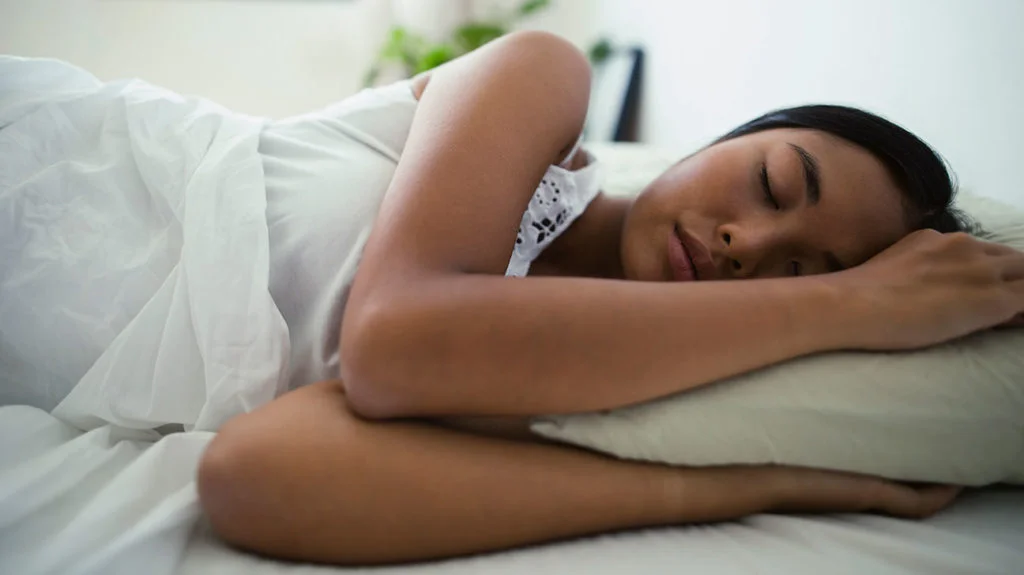
Many struggle with lower back aches or creaky neck or shoulder after waking up. If you have a good mattress and pillow such as Derila the issue could be overworking muscles during sleep.
Posture is a crucial factor in sleep quality and overall health. While one posture may improve symptoms, another may worsen them. The ideal sleep position is individual, and what works for one person may not benefit others.
This article aims to help discover the best sleeping position for your health by exploring different body positions during sleep.
Importantly, sleep position can significantly influence your health outcomes. It is now known that some positions may reduce the risk of certain conditions. For example, side sleeping is associated with a reduced risk of neurodegenerative diseases like Alzheimer’s and Parkinson’s, due to improved brain waste clearance in this position.
What are the Different Sleeping Positions?
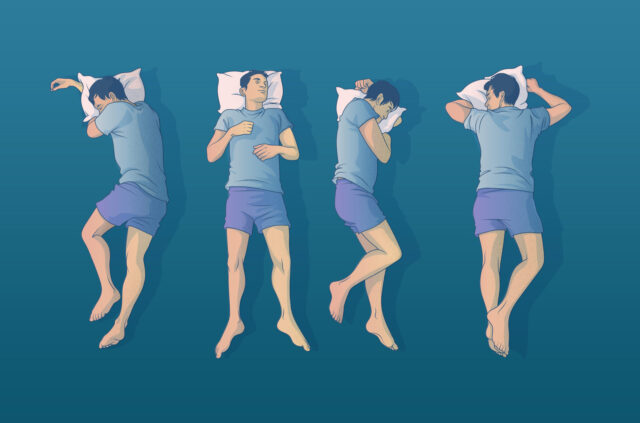
Our bodies naturally fall into the side, stomach, or back sleeping positions. Here’s a detailed guide on the different sleeping positions.
Side Sleeping (Lateral Position)
It involves sleeping with the head and torso lying on the body’s left or right side. The legs are usually straight or slightly bent when sleeping in a side position.
Sleeping on your side, aside from its potential brain health benefits, can also aid digestion and help alleviate symptoms of acid reflux.
Side sleeping is further categorized into different positions, including:
- Fetal Position: This involves sleeping on your side with your legs bent upwards.
- Log Position: This is where you sleep on your side and with your arms down
- Yearner Position: It promotes a forward posture. The position involves lying sideways while the arms are extended to the front.
Side sleeping may be particularly beneficial for people with:
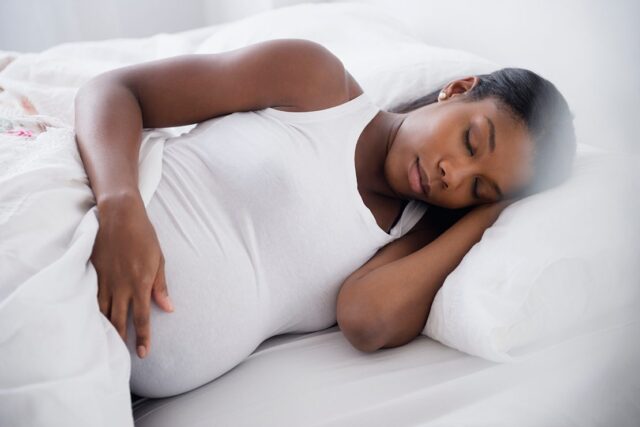
- Pregnant women
- Acid reflux
- Back pain
- Hip pain
- Snoring problems or sleep apnea
- Older people
The side sleeping position is not recommended for people with:
- Shoulder pain
- Jaw issues
- Worries about wrinkles
As you can see, there are many things it helps with but also a few areas where people experience issues. If you find yourself in both, a fine balance needs to be struck.
Back Sleeping (Supine)
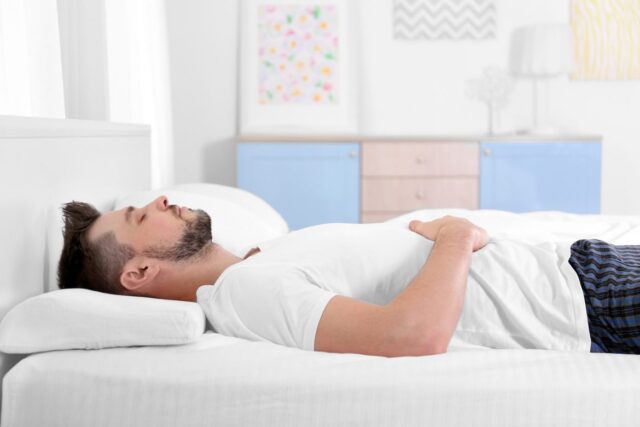
The back position involves lying flat on the back with legs stretched out in a neutral pose. Arms can lie flat by the body’s sides or be bent with hands across the chest or stomach. They can also be raised above the shoulders or out to the sides.
There are two main positions with back sleepers:
- Soldier Position: This involves lying on your back with legs straight and arms down by sides.
- Starfish Position: This involves lying on your back with arms up near the pillow, and legs outstretched.
Flat back sleeping aligns the spine and distributes body weight, preventing neck and back aches. This position can also alleviate symptoms of sleep apnea, a serious sleep disorder, as it encourages better airway patency. Back sleeping may be beneficial for people with the following:
- Lumbar spinal pain
- Neck pain
- Nasal congestion
- Concerns about wrinkles
Sleeping on your back is not recommended for people with:
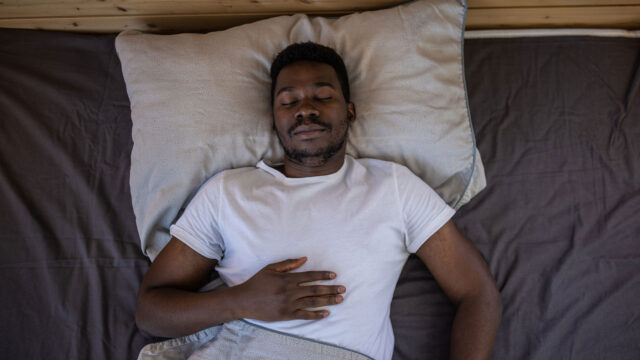
- Snoring problems or sleep apnea
- Back pain
- Acid reflux or GERD
- Heavier adults
- Pregnant women
- Older adults
Stomach Sleeping
When sleeping on the stomach, the face is turned to the side for easier breathing. Arms and hands can be tucked under, positioned sideways, or stretched out while legs remain straight.
Sleeping on your stomach causes poor spine support, neck misalignment, and facial wrinkling. Moreover, this position can also lead to issues such as restless sleep due to discomfort. Those who sleep on their stomach often experience disrupted sleep and frequent tossing and turning. Stomach sleeping is discouraged for people with:
- Back or neck pain
- Worries about wrinkles
- Pregnant women
However, if you prefer sleeping on your stomach, ensure you use quality bedding to reduce harm. A firm mattress facilitates hip sinking, while a smaller cushion supports neck elevation.
Three-Quarter Position or Semi-Prone Position

This position involves a mixture of side and stomach sleeping. It can be considered a compromise between the two, with the body slightly turned towards the stomach, one leg bent at the knee, and arms positioned for balance and comfort. Often, one arm is stretched out above the head while the other rests along the body.
The Three-Quarter Position may offer some benefits similar to side and stomach sleeping, but it also has its unique advantages. For instance, this position is known to be comfortable and may decrease the likelihood of snoring, making it beneficial for some individuals with sleep apnea. Moreover, it might be an ideal option for those who find sleeping fully on their side or stomach uncomfortable.
Despite its benefits, this sleeping position could potentially lead to arm numbness due to the pressure on the arm that’s stretched out above the head. It might also cause strain on the shoulder and neck if not properly supported by a suitable pillow.
Pregnant women, people suffering from shoulder pain, or those who are concerned about facial wrinkles might want to avoid this position.
As always, your comfort and sleep quality are paramount. It is advised to use a supportive pillow and mattress and to adjust your position until you find what works best for you. If you find the Three-Quarter Position is causing you any discomfort or disruption in sleep, it would be wise to try another position.
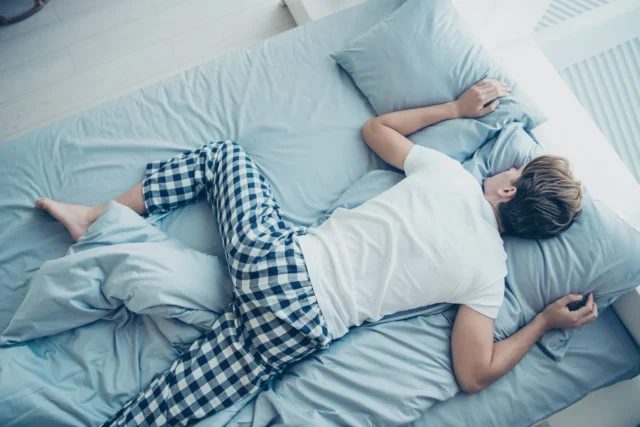
Final Thoughts
The optimal sleep position allows for uninterrupted sleep. It also ensures that you enjoy a refreshed morning without aches and pains. If your current position is uncomfortable, change it. Making this change should be gradual to avoid disrupting your sleep. Consider using tools like body pillows to aid in the transition. You can use various strategies to adjust to the new position.
Importantly, it is key to remember individual differences play a large role in determining the ideal sleep position. Factors like body size, comfort preferences, and underlying health conditions can all affect this decision. Thus, it’s always a good idea to pay attention to your body’s signals and adjust accordingly.









